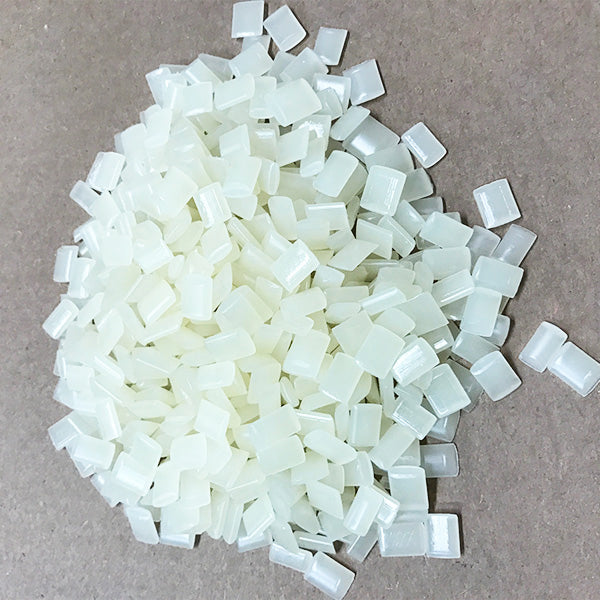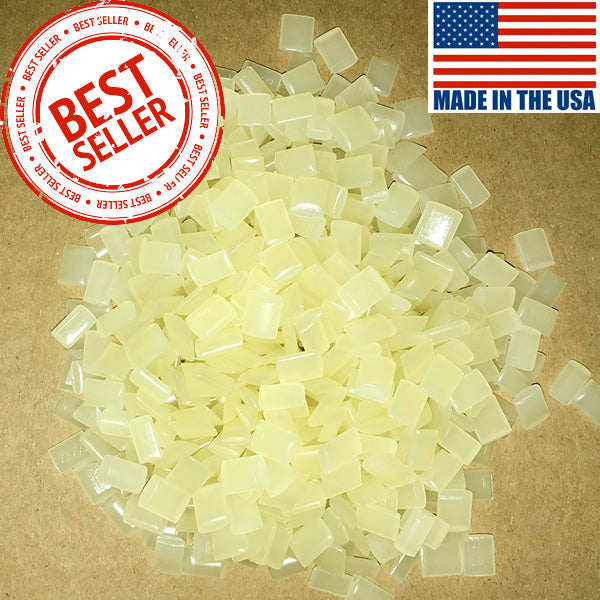When choosing the right adhesive, whether it’s for industrial use or another project, picking the right hot melt adhesive technology can be a tricky decision to make. You need a hot melt that’s going to work well in your particular environment — whether it’s extreme cold or high heat — and one that’s appropriate for the materials you’re working with, among many other considerations.
If you’ve been researching different types of hot melt adhesives, you’ve probably come across two common types: EVA and metallocene. While both types of hot melts have their unique advantages, they’re not appropriate for every application. Learning the differences between these two hot melt technologies will ensure that you get the best solution for your particular needs.
EVA is the most common hot melt. There are, however, noticeable differences between EVA and metallocene. When comparing the two, consider the factors below to determine which one will best meet your requirements.
Benefits of Metallocene: Less is More
In the case of metallocene adhesive, the cliché “less is more” is particularly true. Metallocene-based hot melt adhesives are typically less dense and contain less volume than other brands and types of hot melt adhesives. However, the adhesive strength is excellent. Who says more is always better? Metallocene’s lower volume makes it great for applications where you want to use a smaller amount of adhesive without compromising strength.
Metallocene is designed to optimize bead size, generally using a third less material, forging a strong bond, despite using less product. Using less material means getting more mileage out of metallocene products than you normally would with some of the other hot melt technologies. Metallocene can be applied at lower flat rates, generally resulting in as much as 40% reduction in the use of adhesive compared to what you would use with an EVA hot melt.
Besides being more effective, metallocene-based hot melt technologies are known for their precise application, which yields more control over the flow of material, bead size and bead quality. Unlike EVA-based hot melt technologies, metallocene hot melt never thickens in viscosity.

In addition to its ability to do more with less, as well as its capacity for precision, metallocene hot melt-based technologies can weather extremely hot and cold temperatures. A hot melt adhesive able to withstand a wide range of temperatures and still perform and deliver results offers many companies a practical solution to weather issues.
Metallocene offers the same resistance no matter the temperature or conditions. Enterprises that have frozen food applications may opt for this choice, as the cold temperatures might otherwise compromise the seal. It's not just frozen food applications that may find this adhesive an effective option. If you’re facing and storage in unregulated temperatures — or just want to protect against unexpected outages — then you’ll definitely want to consider using metallocene hot melts.
No matter what your product, your packing, carton and box applications may be subjected to a wide range of temperatures and weather during the shipping and storage steps. Most companies address these potential problems by using metallocene because of its efficiency and efficacy in fluctuating temperature conditions.
EVA Benefits
EVA, or ethylene vinyl acetate, remains one of the most common forms of hot melt adhesives used in packaging and converting operations. These are polymer-based hot melts that are thermoplastic in nature, so they’re solid at room temperature. They’re quite popular because they don’t use water or solvents to trigger the adhesive properties, which equals a super-fast set time. What’s more, EVA hot melts bond to a very broad range of substrates.
Companies formulate EVA for diverse types of end-use requirements. Depending on the need, EVA formulates provide freezer-grade adhesion, display excellent hot tack and the ability to easily penetrate difficult coatings like metalized PET or wax. For these reasons, it’s often used in the frozen food industries to ensure a quality seal that’s not compromised by extreme cold.
EVA hotmelt has been in use for many years. It has good flexibility and tensile strength. Packaging and graphic arts frequently rely on EVA hotmelt. For more information on EVA hot melt adhesives, make sure to read our complete guide.
Charring
Unlike metallocene, EVA hot melt adhesives are known and prone to char build-up. Eventually you will reach a point where the charring conditions are at threshold level (when the adhesive application system can no longer be cleared to be used again). When this happens, the hoses, nozzles and all other associated parts with the application system must be replaced. This can come at a hefty cost as you replace them with newer and more efficient applicator parts, as you’ll likely be required to pay for professional installation.
Price Differences
The direct applications and benefits of choosing metallocene-based hot melt adhesives are undeniable, but what about the cost? Although metallocene hot melt adhesive technology can fetch a higher price tag than its EVA counterpart, the issues with the char-prone nature of EVA can completely outweigh the initial higher cost of metallocene.

In the long run, saving but having to gamble on inconsistent and char-prone EVA-based technologies may just be a sticky mess you will want to avoid altogether. Where costs due to problems of char build-up are concerned, there can be many.
Defect costs can generally be avoided when using a metallocene adhesive. Packaging defects because of poor adhesion (which can lead to messy openings of packages and materials throughout the distribution process) may not seem like a huge expense, but can add up and be an ongoing issue. Also, damaged content and other unwanted consequences relating to customer relationships can result in more money out of your pocket.






